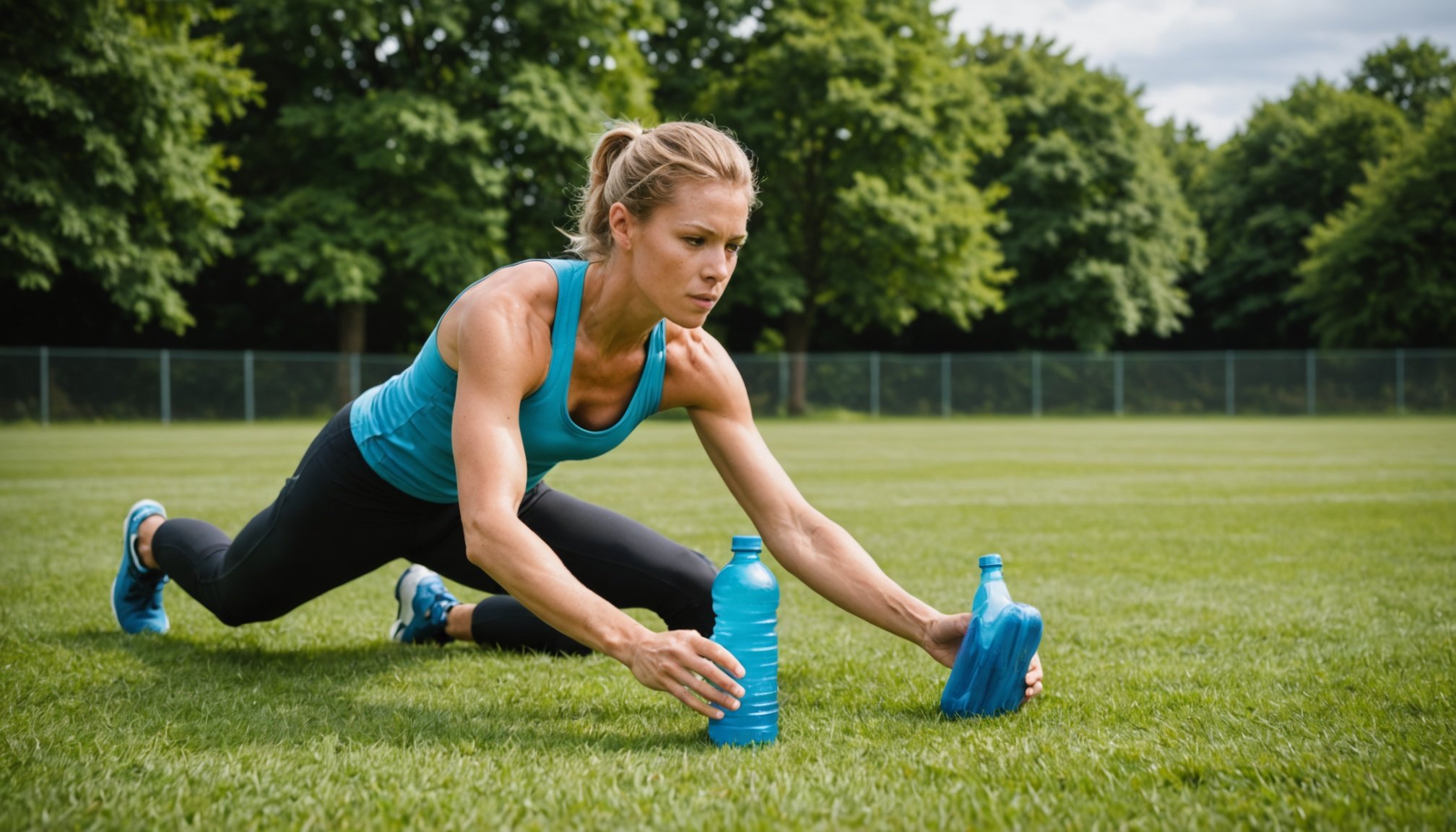Importance of Cooling Down for Amateur Athletes
For amateur athletes, incorporating a cooling down routine post-activity is essential. This practice involves gradual slowing of physical activity, helping to initiate recovery by preventing lactic acid build-up. Lactic acid, if not properly managed, can cause muscle soreness and stiffness.
Physiological Changes During Cooling Down
Cooling down promotes physiological changes that are crucial for recovery. The process helps the heart rate to decrease steadily, preventing dizziness. Furthermore, it aids in regulating breathing and maintains blood circulation, allowing the body to return to a restful state.
Additional reading : Essential Strategies for UK Residents to Effectively Control High Blood Pressure
Preventing Injuries and Improving Flexibility
A consistent cooling down routine significantly reduces the risk of injuries. By easing the muscles out of intense activity, athletes lower the probability of strains. Additionally, cooling down is intertwined with improved flexibility. Gentle stretching as part of cooling down increases muscle pliability, which can aid in injury prevention and enhance performance.
Overall Performance Recovery
The benefits of cooling down extend to overall performance recovery. It helps replenish energy reserves and prepares the muscles for the next performance, reducing fatigue. This leads to more effective training sessions, making it a vital component of any athlete’s regimen. By understanding and integrating these practices, amateur athletes can enjoy sustained performance improvements and a healthier athletic journey.
In parallel : Exploring the Health Risks of Extended Sitting for Teen Gamers in the UK
Effective Cooling Down Exercises
Effective cooling down exercises are essential for optimising muscle recovery and enhancing overall performance. Incorporating various recovery techniques can significantly aid both amateur and professional athletes in their fitness journeys.
Static Stretching
Static stretching involves holding a stretch for extended periods to lengthen muscles and increase flexibility. This cooling down exercise is pivotal in reducing muscle tension post-workout. By engaging in static stretches, athletes can alleviate stiffness and promote blood flow to tired muscles, thus accelerating the healing process. It is often recommended to incorporate static stretching for 10 to 15 minutes, targeting major muscle groups involved in the workout, to ensure optimal recovery.
Foam Rolling
The use of foam rolling as a recovery technique can dramatically enhance muscle relaxation and reduce delayed onset muscle soreness (DOMS). By applying pressure to specific muscle areas, foam rolling helps to release muscle knots and improve circulation. To integrate foam rolling effectively, it’s advisable for amateurs to spend 5 to 10 minutes post-exercise, focussing on areas experiencing tension to aid in recovery and performance enhancement.
Light Cardio
Light cardio such as walking or cycling at a moderate pace can be a beneficial cooling down exercise. It aids the body in gradually returning to a resting state, while also flushing out metabolic waste products that can accumulate during intense workouts. A session lasting 5 to 10 minutes can be sufficient for effective muscle recovery.
Tailoring Cooling Down Routines to Athlete Needs
Crafting a personalized recovery routine after exercise is crucial for athletes, as it aligns with their specific requirements. To begin tailoring these routines, an initial assessment of individual fitness levels and common injuries should be carried out. This helps in identifying areas that need special attention and avoiding exercises that may exacerbate existing conditions.
Understanding sport-specific needs is another key aspect. Different sports engage distinct muscle groups; therefore, incorporating exercises that focus on those specific muscles is essential. For instance, a sprinter would benefit more from hamstring and calf stretches, while a swimmer might need to focus on shoulder and back muscles during their post-exercise routine.
Moreover, it’s important to adapt routines to different training intensities. After demanding workouts, more extended recovery sessions might be necessary to alleviate muscle stress and prevent injuries. Conversely, after lighter sessions, a shorter cooldown may suffice.
This tailored approach ensures athletes recover efficiently, enhancing their overall performance and longevity in their respective sports. By prioritizing athlete considerations and the unique demands of their activities, cooling down routines become not just a formality, but a strategic element of athletic training.
Tips for Optimal Recovery Post-Exercise
Recovering effectively after a workout can enhance your overall athletic performance. Focusing on hydration and nutrition is pivotal for speedy recovery.
Hydration Strategies
Maintaining proper hydration is crucial for effective recovery. Water helps regulate body temperature, transport nutrients, and eliminate waste. After intense exercise, replenishing fluids lost through sweat is essential to prevent dehydration. Incorporate electrolyte-rich drinks to restore balance, especially after prolonged or high-intensity workouts. Electrolytes help maintain cellular function, which is vital for muscle repair.
Nutritional Considerations
Nutrition plays a vital role in muscle repair and recovery. Consuming a balanced meal with carbohydrates and proteins post-exercise restores energy levels and repairs tissues. Proteins are essential for rebuilding damaged muscle fibers, while carbohydrates replenish glycogen stores. Include healthy fats and a variety of vitamins to support overall well-being and endurance.
Sleep and Rest for Recovery
Sleep is a cornerstone of effective recovery, aiding in both mental and physical rejuvenation. Aim for 7-9 hours of quality sleep as it facilitates muscle repair and growth. Inadequate sleep can hinder recovery, leading to fatigue and decreased performance. Incorporate regular rest days into your routine to prevent overtraining and promote long-term athletic success.
Evidence Supporting Cooling Down Practices
Evidence supporting the practice of cooling down has been gathered from a variety of research studies and athlete testimonials. Research indicates that cooling down can improve physiological recovery and reduce the risk of injury. A study published in the Journal of Human Kinetics examined how cooling down affects athletic performance. It found that athletes who included cooling down in their routines experienced improved muscle function post-exercise.
Athlete testimonials further underscore the effectiveness of these practices. Amateur athletes frequently report feeling more relaxed and prepared for future activities after a cool-down session. They mention reduced muscle stiffness and quicker recovery times, aligning with expert views on the subject.
Experts advocate for recovery strategies that incorporate cooling down, emphasizing its benefits. These strategies might include gentle aerobic exercises followed by stretching, aiding in muscle relaxation and gradually reducing heart rate. One recommendation from a group of sports physiologists suggests a 10-15 minute routine, allowing the body to transition smoothly from a state of exertion to rest.
Overall, the integration of cooling down into athletic routines is supported through scientific research and practical experiences, enhancing both performance and safety.









